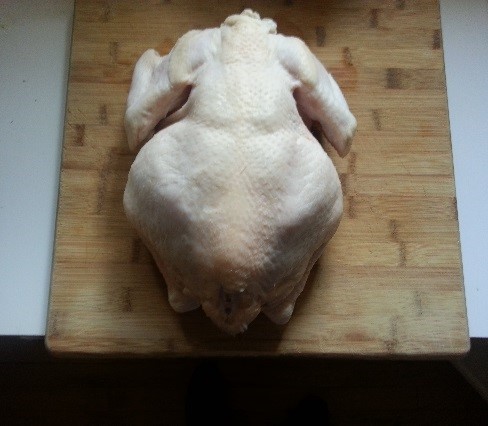Everyone loves roasted chicken, but have you ever tried spatchcocking? Say what?
Spatchcocking, what a great word!
A good roasted chicken is a true comfort food, but can take over two hours to prepare properly. The drawback is time, and time is often not on our side these days. Spatchcocking is a way of roasting chicken in less than an hour. It has other benefits like a shorter resting period and ease of carving for serving.
Spatchcocking is sometimes called butterflying, as Alan Davidson explains in his book, “The Oxford Companion to Food”:
"The theory is that the word is an abbreviation of 'dispatch the cock,' a phrase used to indicate a summary way of grilling a bird after splitting it open down the back and spreading the two halves out flat."
Davidson speculates that the idea of spatchcocking a bird originated in Ireland since he noticed the cooking process in 18th century Irish cookbooks.
How to Spatchcock
To begin this culinary adventure, find a chicken that is around four pounds or less. Traditionally, spatchcocking was always left to smaller birds. Remove the bird from its packaging and dry well with paper towels.
That brings me to a question I often get in my classes at The Chopping Block: Should you wash chicken or just dry it off? According to the FDA, rinsing raw chicken in your sink can actually facilitate the spread of a bacteria called campylobacter. The FDA and CDC strongly urge you to avoid rinsing chicken in your sink.
Before we begin, preheat your oven to 425 degrees.
On a cutting board, turn the chicken over so that the backbone is on top.

Using either a set of kitchen scissors or a sharp knife, cut along one side of the backbone and then the other side and remove it.
Use the neck bone and backbone for a quick batch of stock.
Use your knife to score the soft breast bone and turn the bird over so that the breast side is facing up. Some people cut the tips of the wings off and add that to their stock, but I prefer not to because I tuck them. Tucking the tips under the bird allows for more even roasting. To assure a more even roast, it is important to crack the breast bone so that the bird will flatten out more. Just use the palm of your hand.
Season the entire bird with salt and pepper. For additional flavor, mix the juice of half a lemon, 1 teaspoon of smoked paprika, ½ teaspoon each of cumin and turmeric and a ¼ cup of extra-virgin olive oil and brush half on the bird, reserving the other half for basting. To give your bird even more flavor, use onion, carrot, and celery in place of a roasting rack.
Put the bird on the vegetable rack and roast in the oven. After 30 minutes, baste it with the reserved basting mixture. Baste once more after another 40 minutes. At the 50 minute mark, my bird was perfectly roasted. Allow it to rest for 10 minutes before cutting into it for dinner.
Be sure to properly clean and sanitize your cutting board and any affiliated surfaces after this process in order to avoid cross-contamination that could lead to foodborne illnesses.
This method of preparation also works well on the grill so when you really want to have freshly roasted, and juicy chicken and you don’t have all afternoon, you can spatchcock it.
Give this technique a try, and let me know what you think of spatchcocking in the comments.
